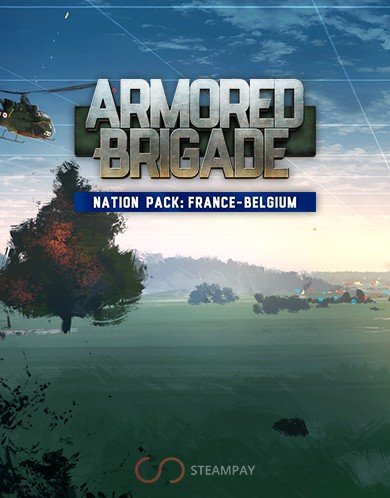Armored Brigade Nation Pack: France – Belgium
- Delivered instantly
- Including shipping costs, sent by keys-craft.com
- Instant key activation upon purchase — no waiting, get started right away
- 7 days to change your mind and get a refund, no hassle
- 24/7 customer support to assist with any questions or issues
Just as the bloodshed of World War I left the French military firmly committed to the predominance of firepower over maneuver, France’s defeat by Germany in 1940 led it to a similar turn toward mobile warfare. Beginning in the 1950s, the French military began experimenting with organizational structures aimed at facilitating rapid maneuver on the battlefield, including the Javelot brigade and the 7e Division Mécanique Rapide, which was eventually standardized as the Division Type 1967. However, a shortage of modern equipment, partly caused by the economic crisis of the early 1970s and the costs of France’s nuclear deterrent, meant that the mechanized divisions that were supposed to follow the new divisional plan were very slow to form.
A striking feature of the French formations of the 1970s is how tank-intensive they were, which was dictated by their intended mode of operation. Their tactics were closer to those of American armored cavalry regiments (or, indeed, their own Division Légère Mécanique before World War II), in that they were not designed to hold ground. Like the DLM of 1940, the mechanized regiments were supposed to operate like the earlier dragons portes, finding and delaying the enemy and preparing the situation for a counter-attack by the tank regiments. However, in the 1980s, the proportion of infantry in the heavy maneuver forces increased by attaching mechanized infantry divisions to corps headquarters, adding VAB-equipped infantry regiments to infantry divisions, and increasing the number of infantry companies in mechanized regiments. France chose to mechanize almost all of its units, using relatively light wheeled armored vehicles that can be air-transported and moved over long distances on poor roads and in rough terrain (such as in sub-Saharan Africa). Although they lack the protection of main battle tanks, the French Army’s wheeled armored units possess considerable firepower, often equipped with 90mm or even 105mm guns.
BELGIUM
A member of NATO since 1967, Belgium has always placed great importance on functioning as a reliable and credible ally. Despite its small population and difficult colonial obligations, Belgium managed to make a significant contribution to NATO’s collective defense by sending half of its army to the FRG as part of the I Belgian Corps. The rest of the army consisted of the Home Troops, responsible for the defense of the country’s territory, consisting of regular army units, which were supplemented in wartime by local gendarmerie and reserve forces. In addition, the Home Troops were supplemented by an elite paracommando regiment with two airborne infantry and one commando battalion. However, much of the equipment remained outdated: the Leopard 1(BE) main battle tank was from the 1960s, while the M75 and AMX-13 Mod 56 APCs and Alouette II helicopters were almost museum pieces from the 1950s. However, in the 1980s, the army underwent a modest rearmament program, upgrading its APCs and artillery, increasing the number of ATGMs, and replacing most of the Air Force’s fast jets with modern ones. Nevertheless, the Belgian Cold War army remains a very interesting and complex faction.
FEATURES
-
- two new factions – France and Belgium
-
- new map: Ardennes, centered around Bastogne
- over 200 vehicles in total
Additional information
| Age rating | No restrictions |
|---|---|
| Developer | Jutsu Games |
| Platform | Mac, Windows |
| Publisher | Games Operators |
| Region | EU, UK |
| Release date | 23.04.2020 |








